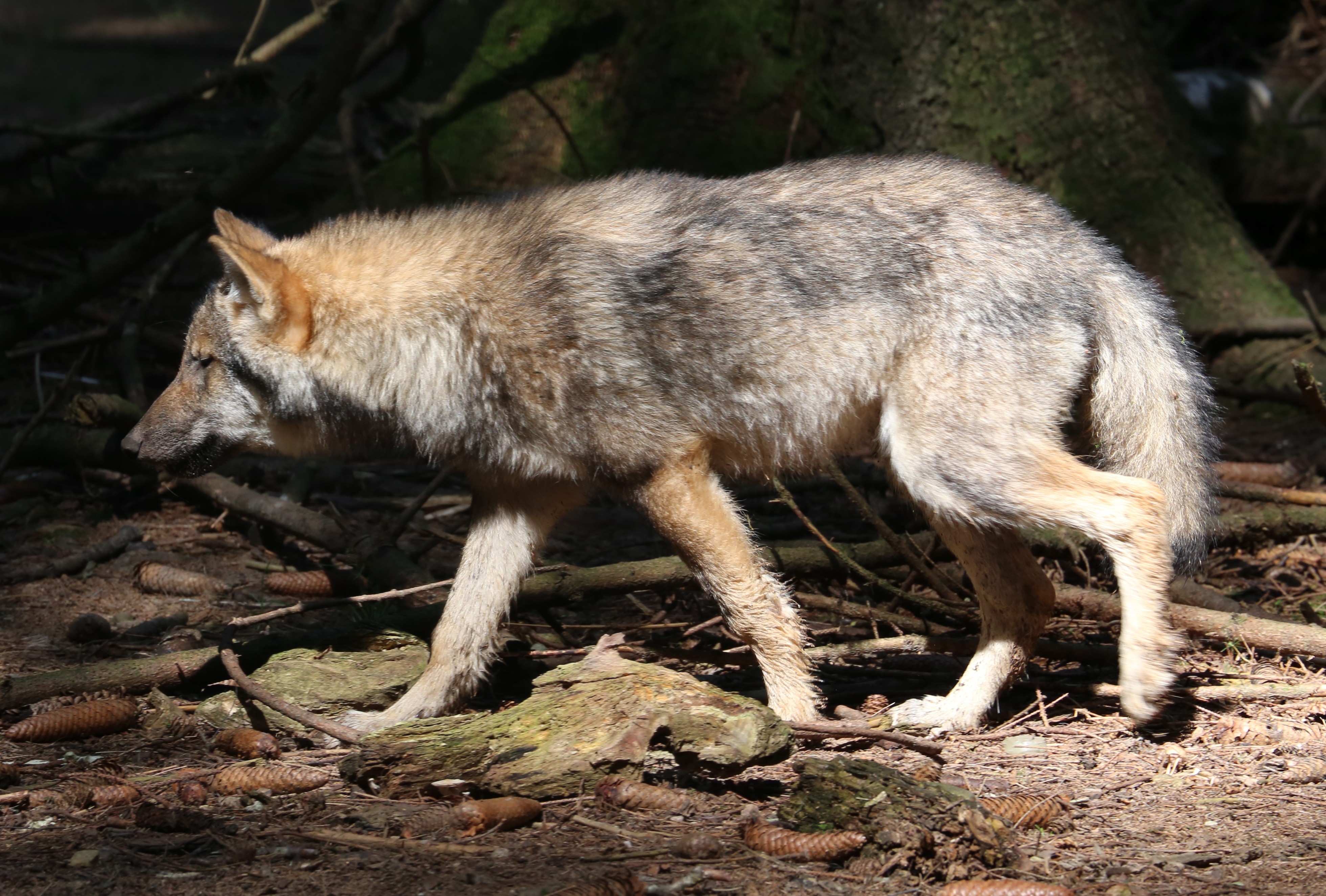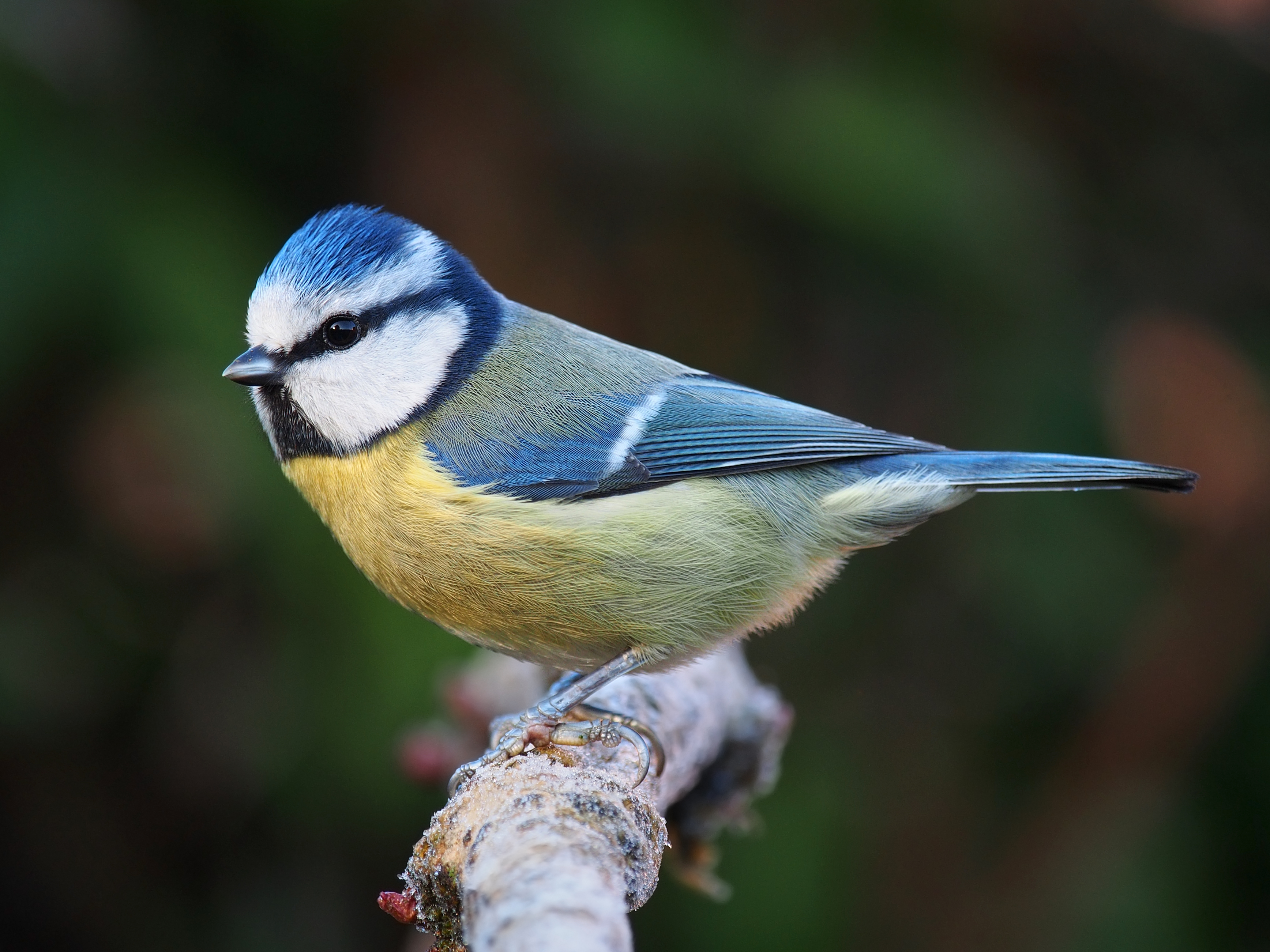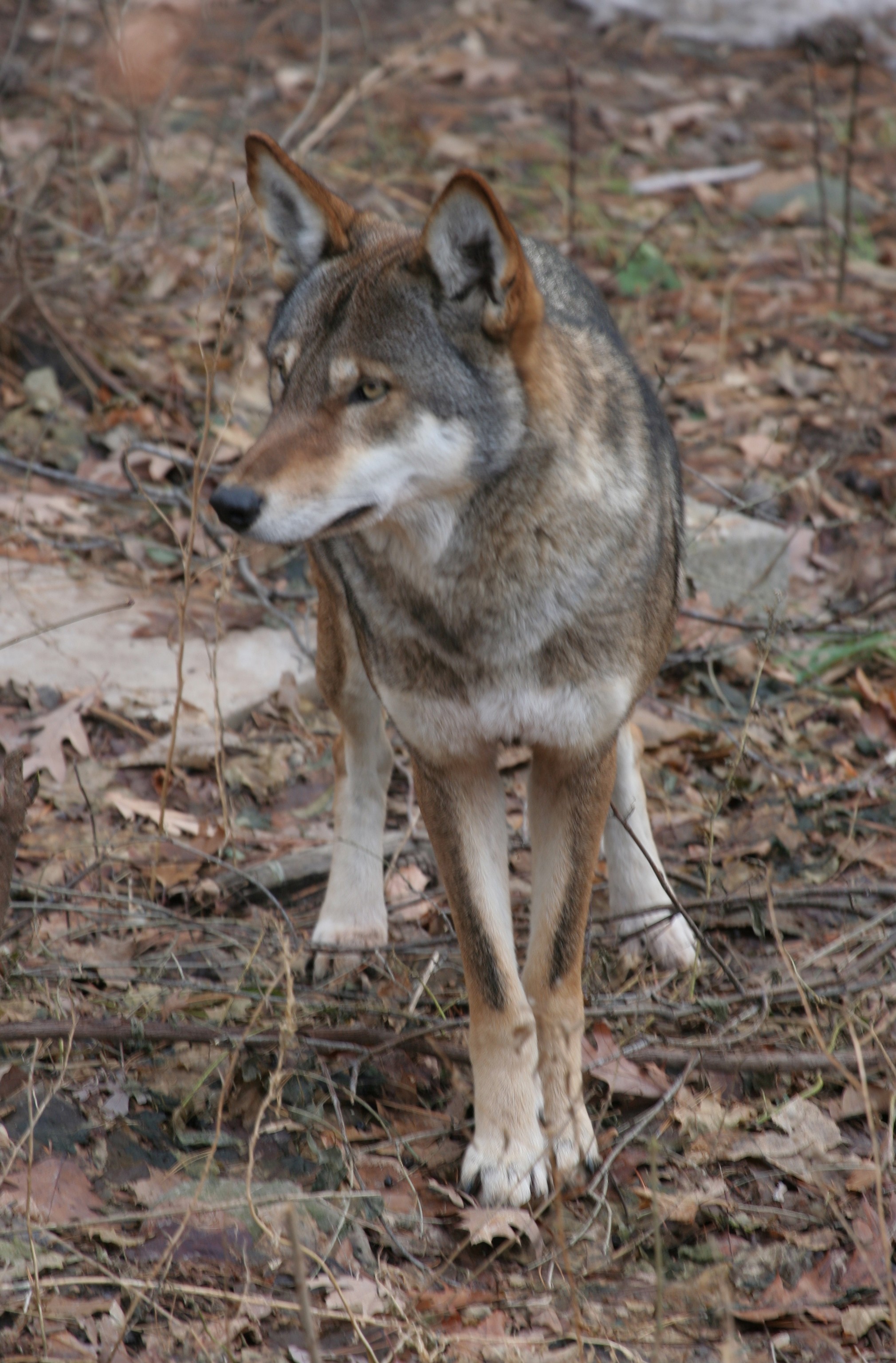|
Local Extinction
Local extinction, also known as extirpation, refers to a species (or other taxon) of plant or animal that ceases to exist in a chosen geographic area of study, though it still exists elsewhere. Local extinctions are contrasted with global extinctions. Local extinctions mark a change in the ecology of an area. In recent times, local extinction has sometimes been followed by a replacement of the species taken from other locations; wolf reintroduction is an example of this. The term "local extinction" is highly vernacular. The more proper biological term is ''extirpation''. Discussion Glaciation can lead to local extinction. This was the case during the Pleistocene glaciation event in North America. During this period, most of the native North American species of earthworm were killed in places covered by glaciation. This left them open for colonization by European earthworms brought over in soil from Europe. Species naturally become extirpated from islands over time. The num ... [...More Info...] [...Related Items...] OR: [Wikipedia] [Google] [Baidu] |
Species
In biology, a species is the basic unit of Taxonomy (biology), classification and a taxonomic rank of an organism, as well as a unit of biodiversity. A species is often defined as the largest group of organisms in which any two individuals of the appropriate sexes or mating types can reproduction, produce Fertility, fertile offspring, typically by sexual reproduction. Other ways of defining species include their karyotype, DNA sequence, morphology (biology), morphology, behaviour or ecological niche. In addition, paleontologists use the concept of the chronospecies since fossil reproduction cannot be examined. The most recent rigorous estimate for the total number of species of eukaryotes is between 8 and 8.7 million. However, only about 14% of these had been described by 2011. All species (except viruses) are given a binomial nomenclature, two-part name, a "binomial". The first part of a binomial is the genus to which the species belongs. The second part is called the specifi ... [...More Info...] [...Related Items...] OR: [Wikipedia] [Google] [Baidu] |
Saltwater Crocodile
The saltwater crocodile (''Crocodylus porosus'') is a crocodilian native to saltwater habitats and brackish wetlands from India's east coast across Southeast Asia and the Sundaic region to northern Australia and Micronesia. It has been listed as Least Concern on the IUCN Red List since 1996. It was hunted for its skin throughout its range up to the 1970s, and is threatened by illegal killing and habitat loss. It is regarded as dangerous to humans. The saltwater crocodile is considered to be the largest living reptile. Males can grow up to a length of , rarely exceeding , and a weight of . Females are much smaller and rarely surpass . It is also called the estuarine crocodile, Indo-Pacific crocodile, marine crocodile, sea crocodile, and informally as the saltie. A large and opportunistic hypercarnivorous apex predator, they ambush most of their prey and then drown or swallow it whole. They are capable of prevailing over almost any animal that enters their territory, includ ... [...More Info...] [...Related Items...] OR: [Wikipedia] [Google] [Baidu] |
Red Wolf
The red wolf (''Canis rufus'') is a canine native to the southeastern United States. Its size is intermediate between the coyote (''Canis latrans'') and gray wolf (''Canis lupus''). The red wolf's taxonomic classification as being a separate species, a subspecies of the gray wolf ''Canis lupus rufus'', or a coywolf (a genetic admixture of wolf and coyote) has been contentious for nearly a century. Because of this, it is sometimes excluded from endangered species lists, despite its critically low numbers. Under the Endangered Species Act of 1973, the U.S. Fish and Wildlife Service currently recognizes the red wolf as an endangered species and grants protected status. Since 1996, the IUCN has listed the red wolf as a Critically Endangered species; however, it is not listed in the CITES Appendices of endangered species. History Red wolves were originally distributed throughout the southeastern and south-central United States from the Atlantic Ocean to central Texas, southe ... [...More Info...] [...Related Items...] OR: [Wikipedia] [Google] [Baidu] |
Reintroduction
Species reintroduction is the deliberate release of a species into the wild, from captivity or other areas where the organism is capable of survival. The goal of species reintroduction is to establish a healthy, genetically diverse, self-sustaining population to an area where it has been extirpated, or to augment an existing population. Species that may be eligible for reintroduction are typically threatened or endangered in the wild. However, reintroduction of a species can also be for pest control; for example, wolves being reintroduced to a wild area to curb an overpopulation of deer. Because reintroduction may involve returning native species to localities where they had been extirpated, some prefer the term "reestablishment". Humans have been reintroducing species for food and pest control for thousands of years. However, the practice of reintroducing for conservation is much younger, starting in the 20th century. Methods for sourcing individuals There are a variety of appr ... [...More Info...] [...Related Items...] OR: [Wikipedia] [Google] [Baidu] |
Redbreast Tilapia
The redbreast tilapia (''Coptodon rendalli'') is a species of fish in the family Cichlidae. It is found widely in the southern half of Africa. Its natural habitats are freshwater lakes and freshwater marshes. It is known as the redbreast kurper in South Africa. Distribution The species is found in the drainage basins of the upper Congo River and the Kasai River, in Lake Tanganyika, Lake Malawi, Zambezi River, and the coastal regions of the Zambezi outlet to KwaZulu-Natal, as well as in the Limpopo River, the Okavango River, and the Cunene River. They have been established as edible fish in several countries. Description ''C. rendalli'' grows to a maximum length of 45 cm and a maximum weight of 2.5 kg, and possesses a high-backed, sideways oblate body. Its body height is 42.2 to 49.4% of its standard length, and its head length is 31.1% to 37.5% of standard length. The top of its head is convex, or sometimes concave in large specimen due to the continued growth of the mo ... [...More Info...] [...Related Items...] OR: [Wikipedia] [Google] [Baidu] |
Characidium Zebra
''Characidium'' is a genus of fish in the family Crenuchidae (South American darters). They are mainly found in South America, but ''C. marshi'' is from Panama. They are small (less than long), slender fish that live on the bottom in flowing fresh waters and feed on small animals such as insects. Species There are currently 69 recognized species in this genus: * ''Characidium alipioi'' Travassos, 1955 * '' Characidium amaila'' Lujan, Agudelo-Zamora, Taphorn, Booth Booth may refer to: People * Booth (surname) * Booth (given name) Fictional characters * August Wayne Booth, from the television series ''Once Upon A Time'' *Cliff Booth, a supporting character of the 2019 film ''Once Upon a Time in Hollywood' ... & López-Fernández, 2013Lujan, N.K., Agudelo-Zamora, H., Taphorn, D.C., Booth, P.N. & López-Fernández, H. (2013)Description of a New, Narrowly Endemic South American Darter (Characiformes: Crenuchidae) from the Central Guiana Shield Highlands of Guyana.''Copei ... [...More Info...] [...Related Items...] OR: [Wikipedia] [Google] [Baidu] |
Astyanax Fasciatus
In Greek mythology, Astyanax (; grc, Ἀστυάναξ ''Astyánax'', "lord of the city") was the son of Hector, the crown prince of Troy, and his wife, Princess Andromache of Cilician Thebe."Astyanax". ''Oxford Classical Dictionary''. Oxford, 1949, p. 101 (''s.v.'' "Ἀνδρομάχη"). His birth name was Scamandrius (in Greek: Σκαμάνδριος Skamandrios, after the river Scamander''A Classical Manual: Being a Mythological, Historical, and Geographical Commentary on Pope's Homer and Dryden's Aeneid of Virgil''. J. Murray, 1833, p. 189.), but the people of Troy nicknamed him Astyanax (i.e. high king, or overlord of the city), because he was the son of the city's great defender (''Iliad'' VI, 403) and the heir apparent's firstborn son. During the Trojan War, Andromache hid the child in Hector's tomb, but the child was discovered. His fate was debated by the Greeks, for if he were allowed to live, it was feared he would avenge his father and rebuild Troy. In the version g ... [...More Info...] [...Related Items...] OR: [Wikipedia] [Google] [Baidu] |
Acestrorhynchus Lacustris
''Acestrorhynchus lacustris'' is a species of fish Fish are aquatic, craniate, gill-bearing animals that lack limbs with digits. Included in this definition are the living hagfish, lampreys, and cartilaginous and bony fish as well as various extinct related groups. Approximately 95% ... in the family Acestrorhynchidae. It was described by Christian Frederik Lütken in 1875, originally under the genus '' Xiphorhamphus''. It inhabits the São Francisco and Paraná River. It reaches a maximum standard length of . ''A. lacustris'' spawns between July–March. at www.fishbase.org. References [...More Info...] [...Related Items...] OR: [Wikipedia] [Google] [Baidu] |
Lyttelton Harbour
Lyttelton Harbour / Whakaraupō is one of two major inlets in Banks Peninsula, on the coast of Canterbury, New Zealand, Canterbury, New Zealand; the other is Akaroa Harbour on the southern coast. It enters from the northern coast of the peninsula, heading in a predominantly westerly direction for approximately from its mouth to the aptly-named Head of the Bay near Teddington, New Zealand, Teddington. The harbour sits in an eroded caldera of the ancient Banks Peninsula Volcano, the steep sides of which form the Port Hills on its northern shore. The harbour's main population centre is Lyttelton, New Zealand, Lyttelton, which serves the main port to the nearby city of Christchurch, linked with Christchurch by the single-track Lyttelton rail tunnel (opened 1867), a two lane road tunnel (opened 1964) and two roads over the Port Hills. Diamond Harbour, New Zealand, Diamond Harbour lies to the south and the Māori people, Māori village of Rāpaki to the west. At the head of the h ... [...More Info...] [...Related Items...] OR: [Wikipedia] [Google] [Baidu] |
Durvillaea
''Durvillaea'' is a genus of large brown algae in the monotypic family Durvillaeaceae. All members of the genus are found in the southern hemisphere, including Australia, New Zealand, South America, and various subantarctic islands. ''Durvillaea'', commonly known as southern bull kelps, occur on rocky, wave-exposed shorelines and provide a habitat for numerous intertidal organisms. Many species exhibit a honeycomb-like structure in their fronds that provides buoyancy, which allows individuals detached from substrates to raft alive at sea, permitting dispersal for hundreds of days over thousands of kilometres. ''Durvillaea'' species have been used for clothing, tools and as a food source by many indigenous cultures throughout the South Pacific, and they continue to play a prominent role in Chilean cuisine. Common name and etymology The common name for ''Durvillaea'' is southern bull kelp, although this is often shortened to bull kelp, which can generate confusion with the North ... [...More Info...] [...Related Items...] OR: [Wikipedia] [Google] [Baidu] |
South Island
The South Island, also officially named , is the larger of the two major islands of New Zealand in surface area, the other being the smaller but more populous North Island. It is bordered to the north by Cook Strait, to the west by the Tasman Sea, and to the south and east by the Pacific Ocean. The South Island covers , making it the world's 12th-largest island. At low altitude, it has an oceanic climate. The South Island is shaped by the Southern Alps which run along it from north to south. They include New Zealand's highest peak, Aoraki / Mount Cook at . The high Kaikōura Ranges lie to the northeast. The east side of the island is home to the Canterbury Plains while the West Coast is famous for its rough coastlines such as Fiordland, a very high proportion of native bush and national parks, and the Fox and Franz Josef Glaciers. The main centres are Christchurch and Dunedin. The economy relies on agriculture and fishing, tourism, and general manufacturing and serv ... [...More Info...] [...Related Items...] OR: [Wikipedia] [Google] [Baidu] |
Durvillaea Potatorum Bull Kelp P2153881
''Durvillaea'' is a genus of large brown algae in the monotypic family Durvillaeaceae. All members of the genus are found in the southern hemisphere, including Australia, New Zealand, South America, and various subantarctic islands. ''Durvillaea'', commonly known as southern bull kelps, occur on rocky, wave-exposed shorelines and provide a habitat for numerous intertidal organisms. Many species exhibit a honeycomb-like structure in their fronds that provides buoyancy, which allows individuals detached from substrates to raft alive at sea, permitting dispersal for hundreds of days over thousands of kilometres. ''Durvillaea'' species have been used for clothing, tools and as a food source by many indigenous cultures throughout the South Pacific, and they continue to play a prominent role in Chilean cuisine. Common name and etymology The common name for ''Durvillaea'' is southern bull kelp, although this is often shortened to bull kelp, which can generate confusion with the North ... [...More Info...] [...Related Items...] OR: [Wikipedia] [Google] [Baidu] |





